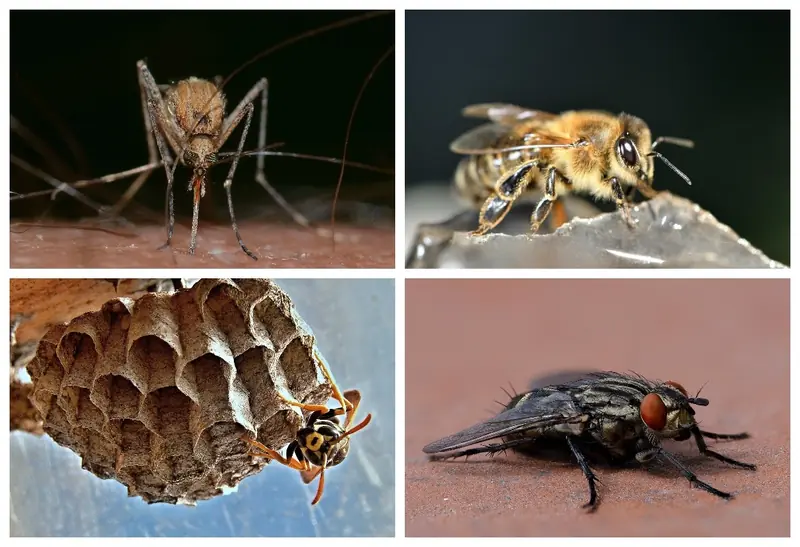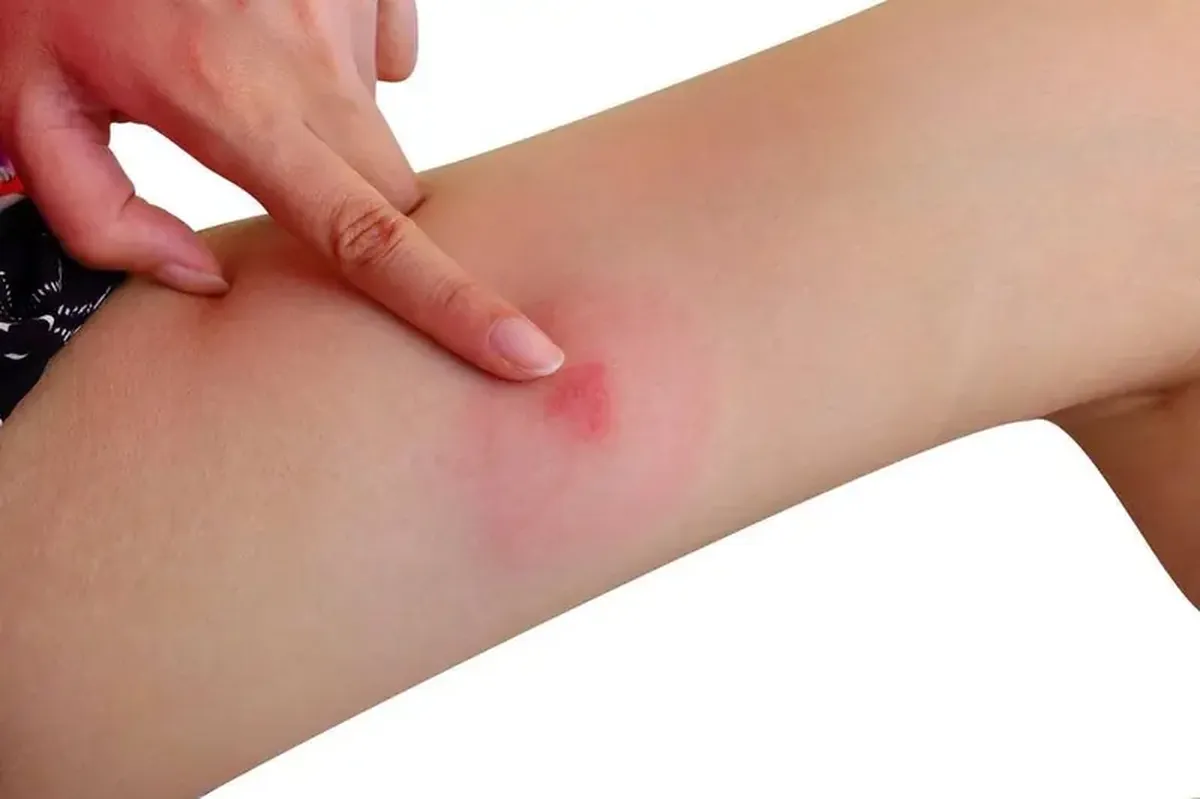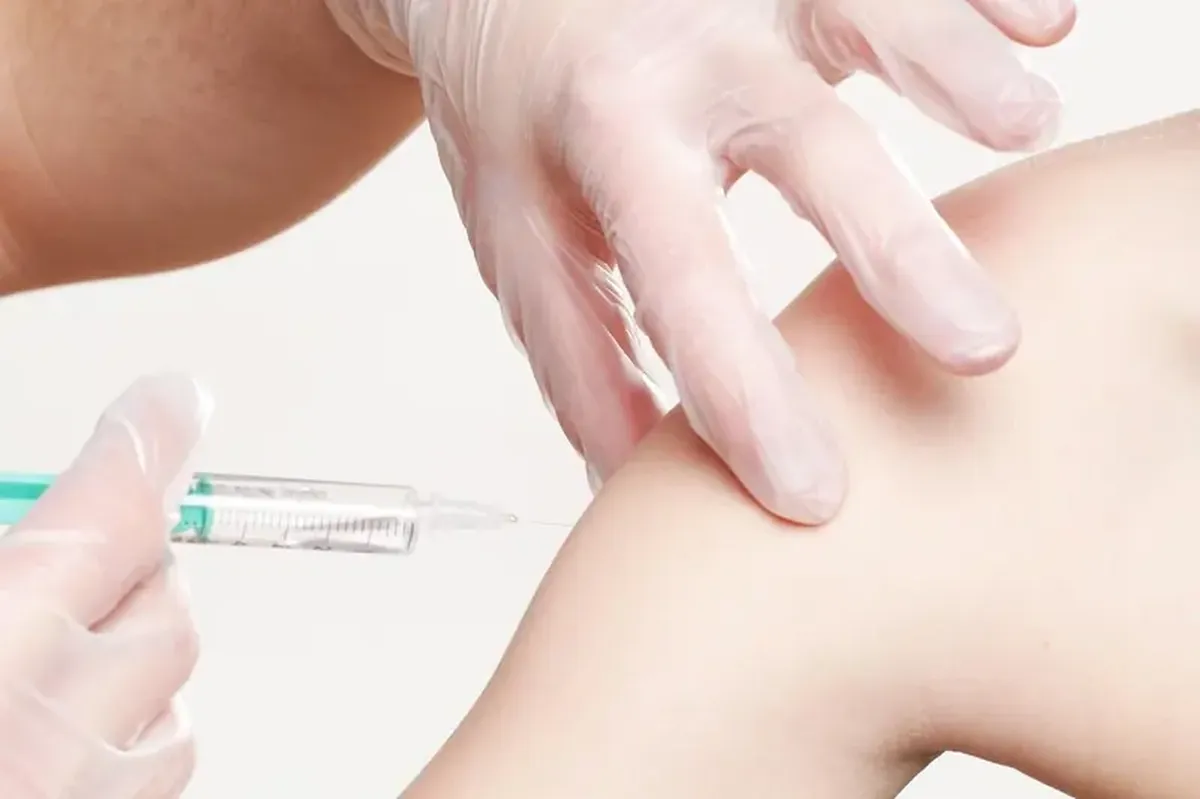
Summer would be much more enjoyable without the annoying buzzing of flies and the whine of mosquitoes (sounds with frequencies over 700 Hz are actually produced not by vocal cords, but by the vibration of air from rapid wing beats, reaching up to a thousand times per second). Even more troublesome are insect bites, which can pose a threat to our health. Flies mechanically carry disease-causing agents, while mosquitoes are vectors for even deadly infections. What measures can we take against insect bites, and are there effective ways to protect ourselves?
Small but Mighty
Doctors view flies as mechanical carriers of pathogens responsible for gastrointestinal infections (such as dysentery, cholera, and typhoid fever), as well as tuberculosis, diphtheria, anthrax, and cysts of protozoa. These insects carry dangerous microorganisms on their bodies and transfer them to humans when they land on food or surfaces we touch. Studies have shown that flies can even carry antibiotic-resistant strains of Staphylococcus aureus, a cause of hospital-acquired infections.
Various species of mosquitoes transmit malaria, tularemia, the Zika virus, chikungunya virus, yellow fever, dengue fever, West Nile virus, and more (the risk of contracting “exotic” diseases increases in tropical and subtropical regions). To prevent gastrointestinal infections spread by flies, it is essential to follow hygiene rules and wash hands frequently. To protect against insect bites, cover arms and legs with clothing, use nets, door curtains to keep flies out, and apply repellents.
The Dangers of Insect Bites
There are two typical reactions to insect bites: local and allergic (the latter is mostly triggered by wasps, bees, hornets, and fire ants).
Symptoms of an acute allergic reaction include:
- Hives (red, itchy spots appear on the skin, resembling burns from nettles; this rash can spread across the body);
- Swelling of the face, throat, or mouth;
- Rapid heartbeat;
- Anxiety and panic;
- Shortness of breath and difficulty breathing;
- Sudden drop in blood pressure, leading to dizziness, shock, loss of consciousness, and potential cardiac arrest.
A life-threatening allergic reaction can develop within 2-5 minutes after a bite, so it’s crucial not to delay calling for medical help. If it has happened once, be prepared for a similar dangerous situation: the likelihood of a repeat allergic reaction to an insect bite is about 60%.

How to Help After Insect Bites
If you get stung on the hand, immediately remove all rings and bracelets. After a bee sting, a venom sac and stinger remain in the skin—these must be removed within the first 30 seconds to prevent an allergic reaction from developing due to the venom. You can extract the stinger and venom sac using a fingernail or a hard object (like a plastic credit card). Do not squeeze the sac or pull on the stinger, as this will release venom into the skin. Afterward, wash the bite area with soap and water and treat it with an antiseptic.
For soothing and disinfecting, apply hydrocortisone cream to the wound. You can make a sterile bandage with calamine lotion. Non-steroidal anti-inflammatory drugs (like ibuprofen) can relieve pain, while a cold compress or ice can reduce swelling. An antihistamine can lessen swelling, skin rashes, and itching, but it should not be given to pregnant women or children under two without a doctor’s advice. In severe cases, hospital procedures may be necessary.

Grandma’s Remedies for Insect Bites
To reduce swelling and itching after a beetle bite, folk remedies suggest using a decoction of oak bark, mint, and St. John’s wort. These medicinal herbs are mixed in equal parts (1 tablespoon of the herbal mixture per cup of water), boiled, steeped for an hour, strained, cooled, and then used as a compress on the bite area. Another method involves pouring a cup of water over 3 tablespoons of yarrow flowers, simmering for 15 minutes, allowing the decoction to cool, straining it, and using it for compresses. You can apply cold olive oil and calendula tincture to the bite area up to 15 times a day.
For allergic reactions, a parsley root infusion can be used: steep 2 tablespoons of chopped raw material in 0.5 liters of boiling water in a thermos for 8 hours, and drink a third of a cup of this mixture three times a day. To relieve pain from a wasp sting (which can last up to 20 hours), apply dandelion or mint juice to the wound. You can make a compress from crushed plantain, lady’s mantle, parsley, onion, garlic, or raw potato. Apply the medicinal compress to the bite area for 15 minutes. You can also use the flesh of peeled aloe leaves on the bite site.

The Dangers of Wasps, Hornets, and Horseflies
One in three hundred people is prone to allergic reactions from insect bites. Allergy symptoms can include dizziness, headaches, body rashes, nausea, rapid heartbeat, and convulsions. A wasp sting in the mouth or throat can lead to swelling of the larynx and suffocation. In this case, emergency medical assistance is required! Until the victim reaches the hospital, gargling with cold water can slow the swelling.
For a wasp sting, disinfect the affected area with an antiseptic (a weak solution of potassium permanganate, ammonia, hydrogen peroxide, or vodka). Apply a cold compress or ice to the sting site. A mixture of crushed activated charcoal, aspirin, validol, or baking soda can quickly relieve swelling, itching, and pain. If a child is stung by a wasp, the risk of an allergic reaction increases, although the reaction may not be immediate. Hormonal injections (prednisone, ephedrine, diphenhydramine) do not negate the need for a doctor’s visit.

If an Allergy Develops
A tiny insect can send its victim to the hospital: complications from a wasp, bee, or hornet sting may require IV fluids and an oxygen mask. Allergic reactions are blocked by epinephrine or adrenaline. In case of acute symptoms, hormonal medications should always be kept on hand in a first aid kit for insect bites. However, epinephrine has side effects and is not suitable for individuals with cardiovascular diseases or those taking other medications.
Preventing an allergic reaction to insect bites can be achieved through a special vaccination: for allergic individuals, insect venom is administered several times in gradually increasing doses. Each day, the body receives more of the allergen, and eventually, the immune system stops reacting to it. Those who have previously experienced severe allergic reactions should not venture alone into areas where insects are present, as there may be no one to provide first aid or help in a critical situation.
How to Avoid Insect Bites
Hornets live in houses, shrubs, and trees, while wasp nests are found in earth mounds, old logs, or walls—these areas should be avoided. When walking through summer grass, wear closed shoes and socks, as well as long-sleeved shirts and pants. Insects are attracted to bright clothing and sweet scents, so when heading outdoors or to a cottage, it’s best to avoid colorful outfits and perfumes. Avoid drinking beer, wine, and sugary drinks outside.

It’s wise to steer clear of lush flowerbeds and avoid plants that attract insects. On an open balcony with flowers, you can keep an insect lamp and install fly screens on doors. Easy-to-install fly screens and door curtains consist of two panels that open and close easily, connecting with magnets. You can block access from the outside to the interior with insect screens, which will serve as a barrier against flies and protection against mosquitoes indoors.
How to Repel Unwanted Guests
If ants have taken a liking to your home, you can coat the surfaces where they appear with lemon juice—within a few days, the uninvited visitors will leave. Lemon can also help get rid of moths: pierce the peels of whole fruits with a pin or needle, insert 15 cloves into each lemon, and place these homemade “hedgehogs” in drawers and cabinets. Moths cannot stand spicy scents. Essential oils also repel flies and mosquitoes. For children, lavender, thyme, or rosemary oil can be applied to protect against mosquitoes. A folk remedy for mosquitoes is to plant geraniums in a flower pot at home, which will naturally solve the insect problem.
Natural mosquito repellents are a healthy alternative to chemical repellents. Essential oils of peppermint, rosemary, geranium, clove, citronella, tea tree, thyme, lavender, and eucalyptus can be used as mosquito repellents indoors. You can apply them to your body or fill an aromatic lamp with them. Before bed in the summer, spray a mosquito repellent (insect aerosol) in the bedroom or plug in a mosquito repellent device: a fumigator (from the Latin fumigare— to smoke, to fumigate) vaporizes a substance that kills insects but is safe for humans and pets. Fumigators are categorized into pyrotechnic and electric types.

Repellents for Flies and Mosquitoes
In the first case, a spiral or plate soaked in fumigant should be ignited. This can serve as a mosquito repellent outdoors, but indoors, electric fumigators are more environmentally friendly and fire-safe, as they do not require ignition and are powered by household electricity. These devices can be tablet-based (with plates) or liquid-based (with liquid). Both types are suitable for use in enclosed spaces—these are mosquito repellents for indoor use. Modern electric fumigators are versatile (can be used against mosquitoes, flies, or other insects). They may come with timers and be odorless (child-safe mosquito repellent).
Insect repellents (fumigators, mosquito sprays, sticky fly traps, etc.) contain the repellent diethyltoluamide (DEET)—an organic chemical compound that effectively protects against bites from mosquitoes, gnats, ticks, and other blood-sucking insects. DEET is also the active ingredient in repellents designed for application on clothing and skin. Its mechanism of action involves repelling and disorienting insects: the repellent causes them to avoid treated areas. Regarding safety for humans—DEET is considered a pesticide with moderate toxicity. Mosquito repellents for children should contain the lowest concentration of DEET—up to 30%.
